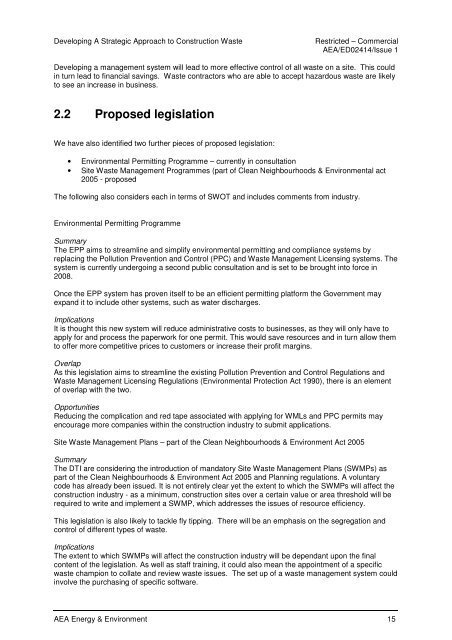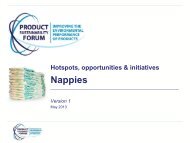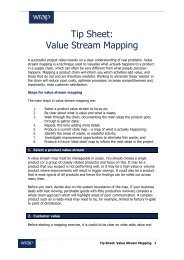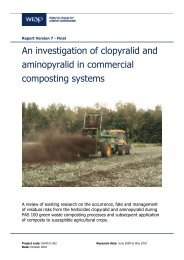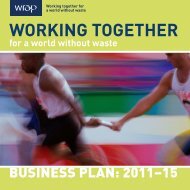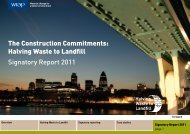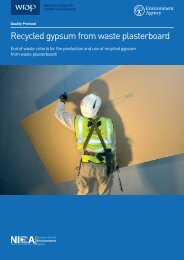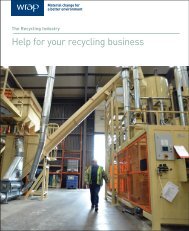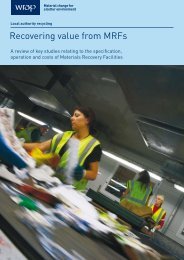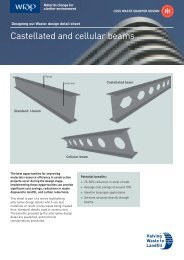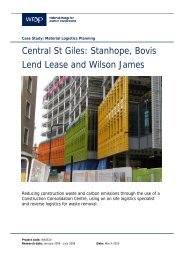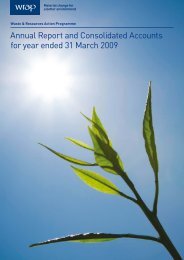Developing a Strategic Approach to Construction Waste
Developing a Strategic Approach to Construction Waste
Developing a Strategic Approach to Construction Waste
You also want an ePaper? Increase the reach of your titles
YUMPU automatically turns print PDFs into web optimized ePapers that Google loves.
<strong>Developing</strong> A <strong>Strategic</strong> <strong>Approach</strong> <strong>to</strong> <strong>Construction</strong> <strong>Waste</strong>Restricted – CommercialAEA/ED02414/Issue 1<strong>Developing</strong> a management system will lead <strong>to</strong> more effective control of all waste on a site. This couldin turn lead <strong>to</strong> financial savings. <strong>Waste</strong> contrac<strong>to</strong>rs who are able <strong>to</strong> accept hazardous waste are likely<strong>to</strong> see an increase in business.2.2 Proposed legislationWe have also identified two further pieces of proposed legislation:• Environmental Permitting Programme – currently in consultation• Site <strong>Waste</strong> Management Programmes (part of Clean Neighbourhoods & Environmental act2005 - proposedThe following also considers each in terms of SWOT and includes comments from industry.Environmental Permitting ProgrammeSummaryThe EPP aims <strong>to</strong> streamline and simplify environmental permitting and compliance systems byreplacing the Pollution Prevention and Control (PPC) and <strong>Waste</strong> Management Licensing systems. Thesystem is currently undergoing a second public consultation and is set <strong>to</strong> be brought in<strong>to</strong> force in2008.Once the EPP system has proven itself <strong>to</strong> be an efficient permitting platform the Government mayexpand it <strong>to</strong> include other systems, such as water discharges.ImplicationsIt is thought this new system will reduce administrative costs <strong>to</strong> businesses, as they will only have <strong>to</strong>apply for and process the paperwork for one permit. This would save resources and in turn allow them<strong>to</strong> offer more competitive prices <strong>to</strong> cus<strong>to</strong>mers or increase their profit margins.OverlapAs this legislation aims <strong>to</strong> streamline the existing Pollution Prevention and Control Regulations and<strong>Waste</strong> Management Licensing Regulations (Environmental Protection Act 1990), there is an elemen<strong>to</strong>f overlap with the two.OpportunitiesReducing the complication and red tape associated with applying for WMLs and PPC permits mayencourage more companies within the construction industry <strong>to</strong> submit applications.Site <strong>Waste</strong> Management Plans – part of the Clean Neighbourhoods & Environment Act 2005SummaryThe DTI are considering the introduction of manda<strong>to</strong>ry Site <strong>Waste</strong> Management Plans (SWMPs) aspart of the Clean Neighbourhoods & Environment Act 2005 and Planning regulations. A voluntarycode has already been issued. It is not entirely clear yet the extent <strong>to</strong> which the SWMPs will affect theconstruction industry - as a minimum, construction sites over a certain value or area threshold will berequired <strong>to</strong> write and implement a SWMP, which addresses the issues of resource efficiency.This legislation is also likely <strong>to</strong> tackle fly tipping. There will be an emphasis on the segregation andcontrol of different types of waste.ImplicationsThe extent <strong>to</strong> which SWMPs will affect the construction industry will be dependant upon the finalcontent of the legislation. As well as staff training, it could also mean the appointment of a specificwaste champion <strong>to</strong> collate and review waste issues. The set up of a waste management system couldinvolve the purchasing of specific software.AEA Energy & Environment 15


